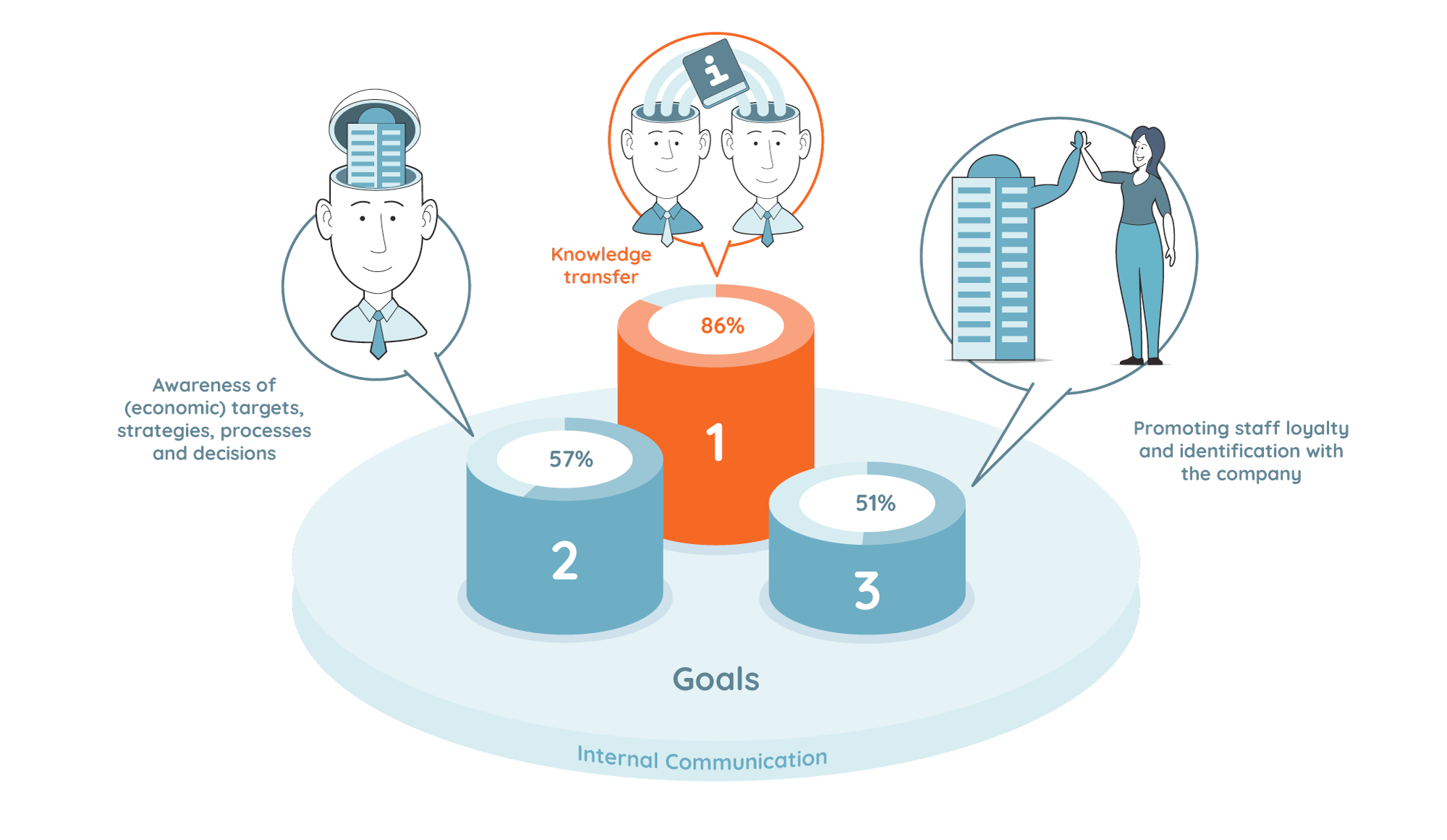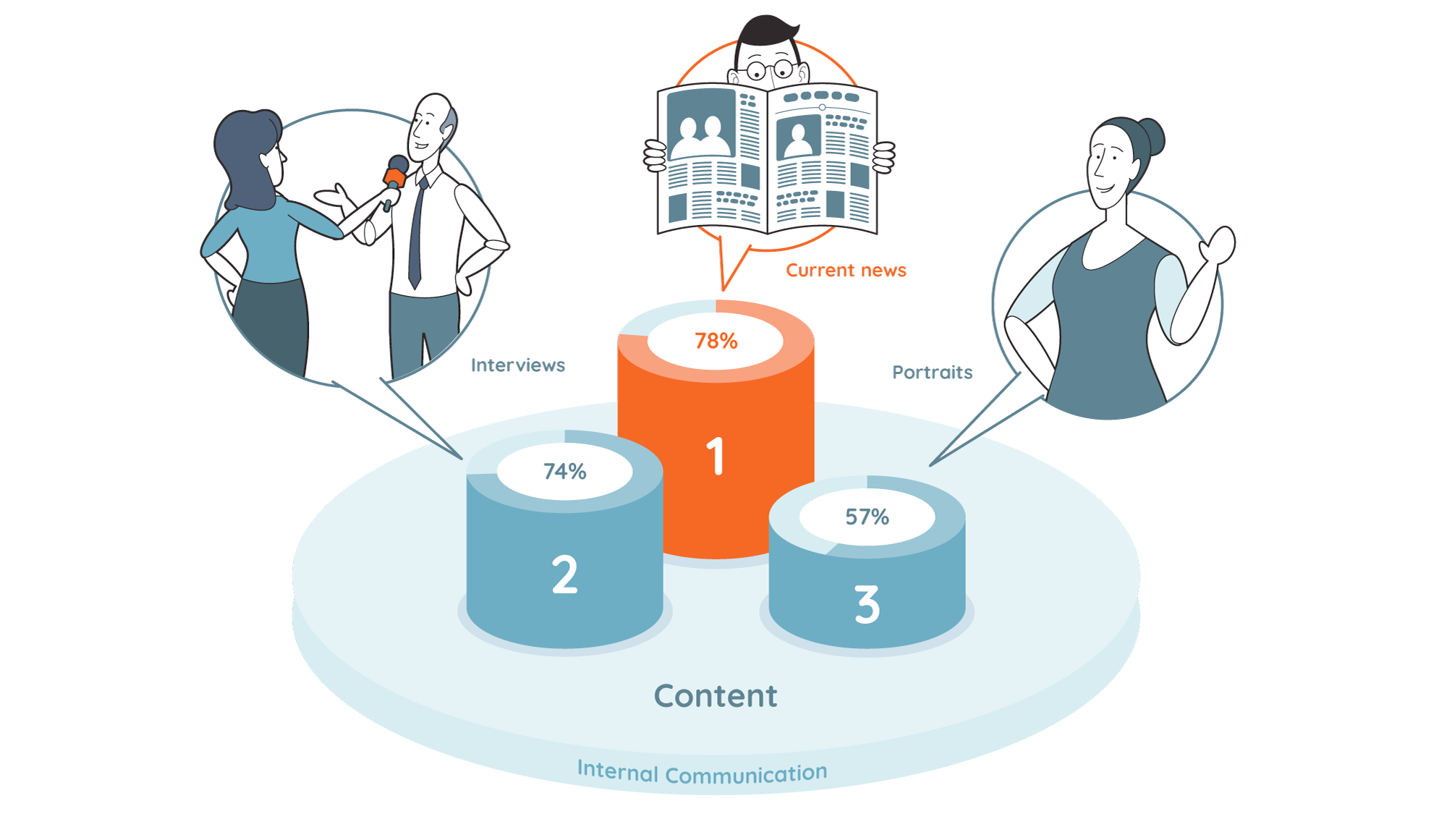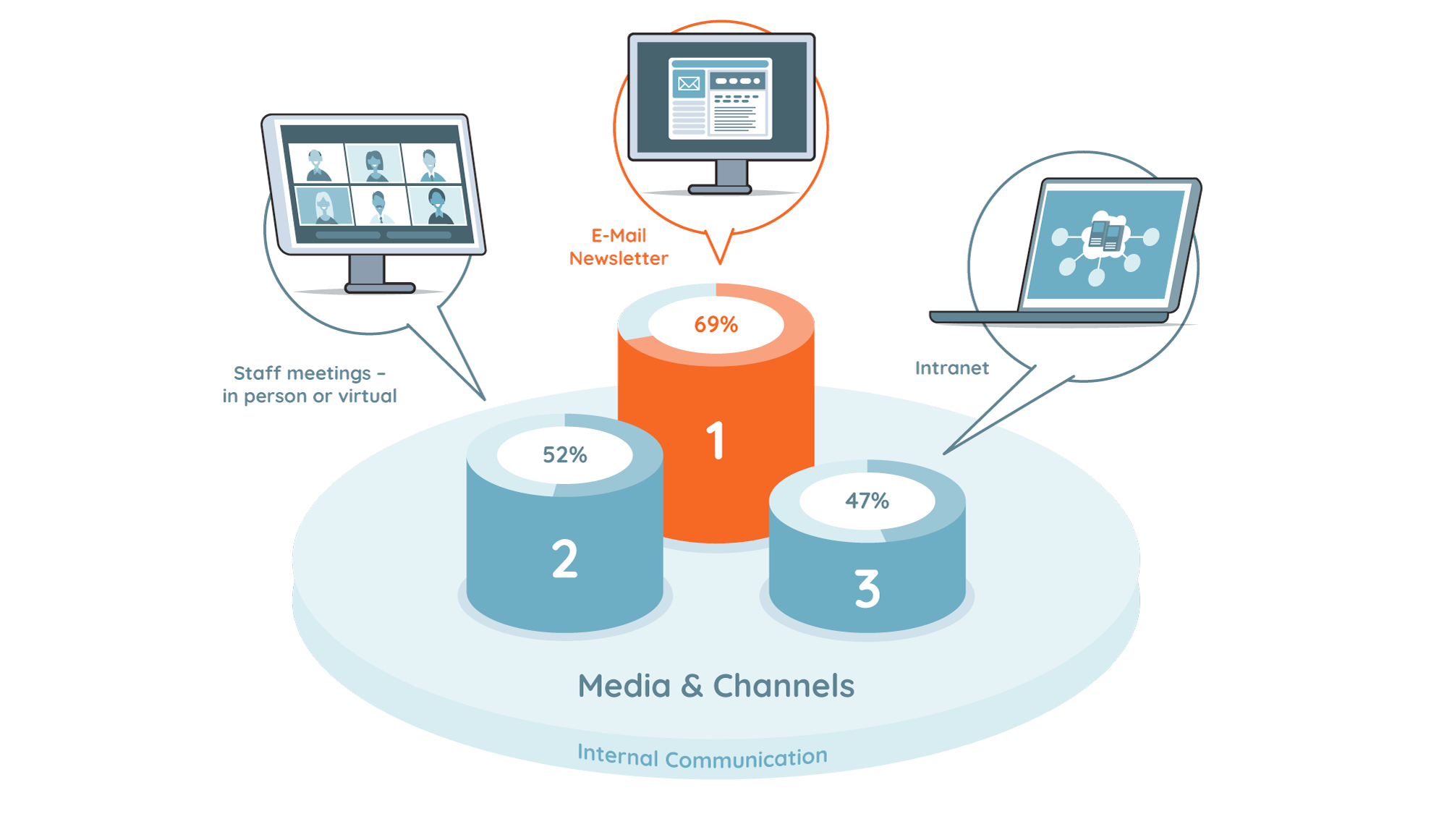Internal communication can make a significant contribution to a company’s success. Of course, we all know that. But are you also up to date with the trends which are currently popular in terms of internal communication? What goals are companies pursuing? Which issues and formats are particularly popular? We took a look at the latest studies and surveys to find out what makes Germany’s companies tick!
What goals are companies currently pursuing with their internal communication?
The Corona crisis has caused worldwide upheaval and also forced us to transform our internal communication in a very short space of time. The Haufe Group’s study “Us after Corona” also underlines this point: They found that only 7 percent of the companies surveyed want to stick to using their previous ways of internal communication in the future. However, as also confirmed by the “Trendmonitor for Digital Internal Communication 2022” the goals of internal communication are set. According to the study, keeping staff up to date and transferring knowledge are the most important goals of internal communication for most companies (85.9%). The second most important goal is to raise awareness of (economic) targets, strategies, processes and decisions (57.4%). According to the study, the third most important goal is to promote staff’s sense of loyalty to, and identification with, the company (51.4%).

Which aspects are being discussed, which formats are popular?
According to Trendmonitor, most companies focus on strategic content in their internal communication, i.e. on communicating values and a positive attitude (84.7%). Other key issues are human resources and change processes. Other trending issues are staff stories, innovation issues, content on everything to do with departments and locations, as well as service issues. This content is most often seen in current news (77.5 %) and interviews (73.9 %). Portraits are also popular (56.6 %). However, infographics and dialogue pictures, podcasts, quizzes and games are also gaining in popularity because they are well-suited to conveying complex ideas in a simple and entertaining way.

Which media and channels are used most often?
A survey by the Berlin-based opinion and market research company Civey showed that despite the digitalisation push, emails and email newsletters are still the most frequently used channel for reaching employees (69%). In second place is an equally traditional tool: the staff meeting – held in person or virtually (52 %), while the Intranet (47 %) only comes in in third place. According to Trendmonitor, staff apps are also increasingly in demand: 18.2 percent of the companies surveyed plan to introduce their own app for their staff in the near future. Podcasts and social Intranets are also becoming increasingly popular (+13.6% and +8.3% respectively).
Staff magazines also continue to enjoy great popularity. Indeed, in German-speaking countries (Germany, Austria and Switzerland) alone, more than 7,000 staff magazines were published in 2021 – in print, online or as an app (source: Statista). One reason for the great popularity of staff magazines is that internal communication is becoming increasingly important for companies to compete for qualified professionals. Staff magazines are also an important tool in employer branding.

Specific differences in company sizes
The aforementioned trends can be observed regardless of company size. However, the various studies and surveys also reflect that there are specific differences in the choice of individual media. For instance, larger companies (with more than 10,000 staff) tend to prefer media that have a wide reach (e.g. the Intranet, in-house newspapers or staff apps).
Conclusion
At the very latest since the advent of Corona, internal communication has been recognised for what it is: an important strategic factor in a company’s success. Indeed, in times of digital transformation, working from home and new work, it is more important than ever to keep staff up to date, to ensure the exchange of information and to give the workforce opportunities to ask questions and give feedback. Even companies that have long been critical of modern corporate communication can no longer ignore this fact. There are no blueprints for success, but there are plenty of smart tools that can be used sustainably for internal communication. Get in touch with us and we’ll be happy to advise you!

